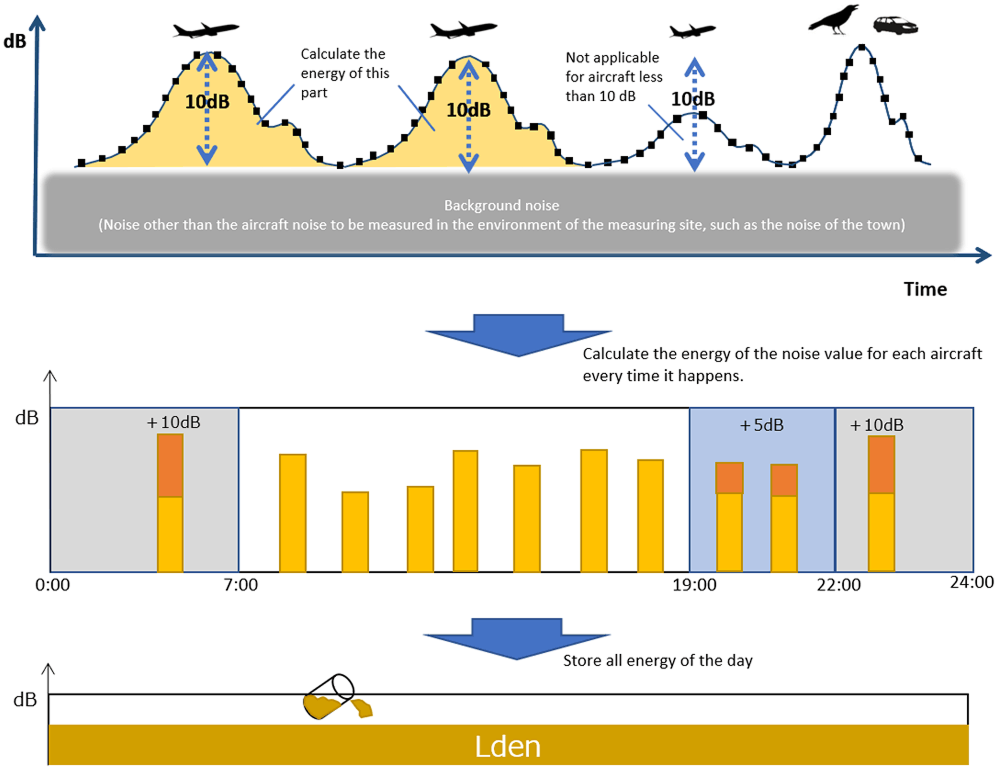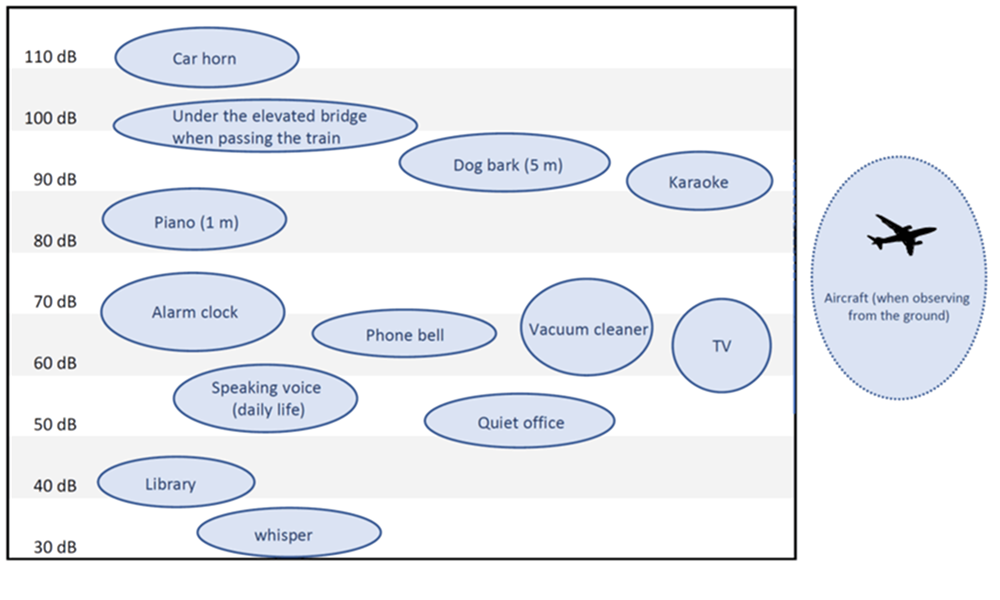Aircraft noise level
Instantaneous value
- This is the measured instantaneous value at the noise measurement station installed by Kansai Airports.
- Displays the measured value every 2 seconds at each measurement station.
- Non-aircraft sounds are included.

Evaluation value (Lden)
- This is an evaluation value over a certain period of time based on the noise value measured at the noise measurement station installed by Kansai Airports.
- Since only aircraft noise is identified from the measured noise, no other sound is included.
- Energy is calculated and evaluated for each aircraft when the difference between the maximum noise level and the background noise level is 10 dB or more.

- Calculate the energy of each noise level for the number of occurrences.
- The same sound feels louder late at night and early in the morning, so weight it according to the time zone. (From 19:00 to 22:00: + 5 dB , From 22:00 to 7:00: + 10 dB)
- Calculate an evaluation value (Lden) by summing all the energy in a time period (one day unit).
Review of Aircraft Noise Assessment
The evaluation index for aircraft noise has been revised from the previous “Weighted Equivalent Continuous Perceived Noise Level (WECPNL, commonly known as the ‘W value’)” to the “Day-Evening-Night Equivalent Sound Level (Lden).” Accordingly, the environmental standards related to aircraft noise are as shown in the table below.
| Area Classification | Standard Values | |
|---|---|---|
| [After revision] Lden | [Before revision] WECPNL (W value) | |
| Ⅰ | 57 dB or lower | 70 or lower |
| II | 62 dB or lower | 75 or lower |
Type I areas: Areas used exclusively for residential purposes
Type II areas: Areas other than Type I where it is necessary to maintain normal living conditions
Following the revision of the evaluation index for aircraft noise, Lden values have been published starting with the observation results in April 2013.
To facilitate comparison of aircraft noise observation data, the Lden values from the FY2012 observation and the WECPNL (W value) from the FY2013 observation were published as reference values.
Reference of noise level
Noise level varies depending on the measurement time and various conditions. Below is the reference of noise level.

Partially quoted from “Current Status of Living Noise and Future Issues” (Ministry of the Environment)
